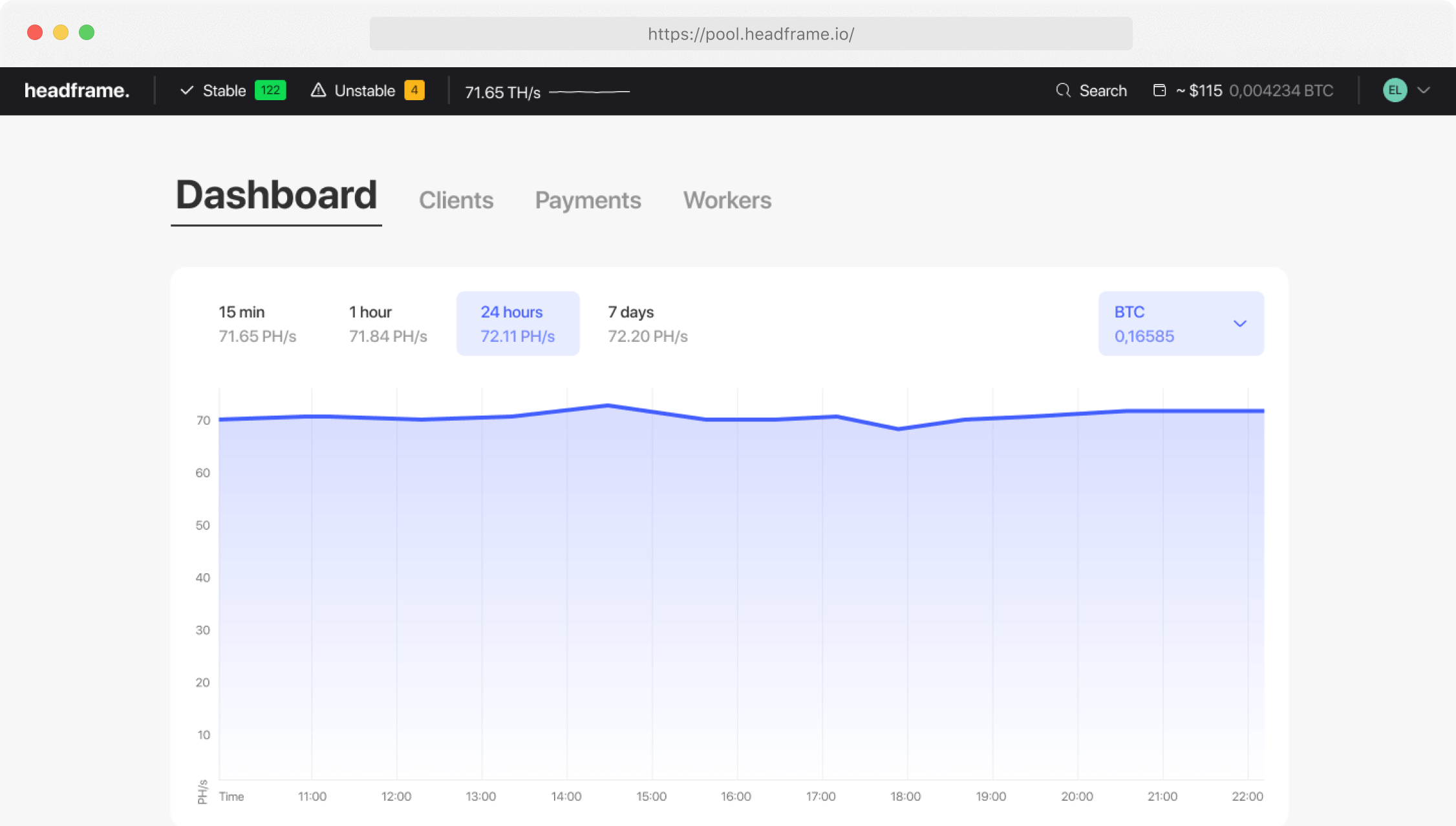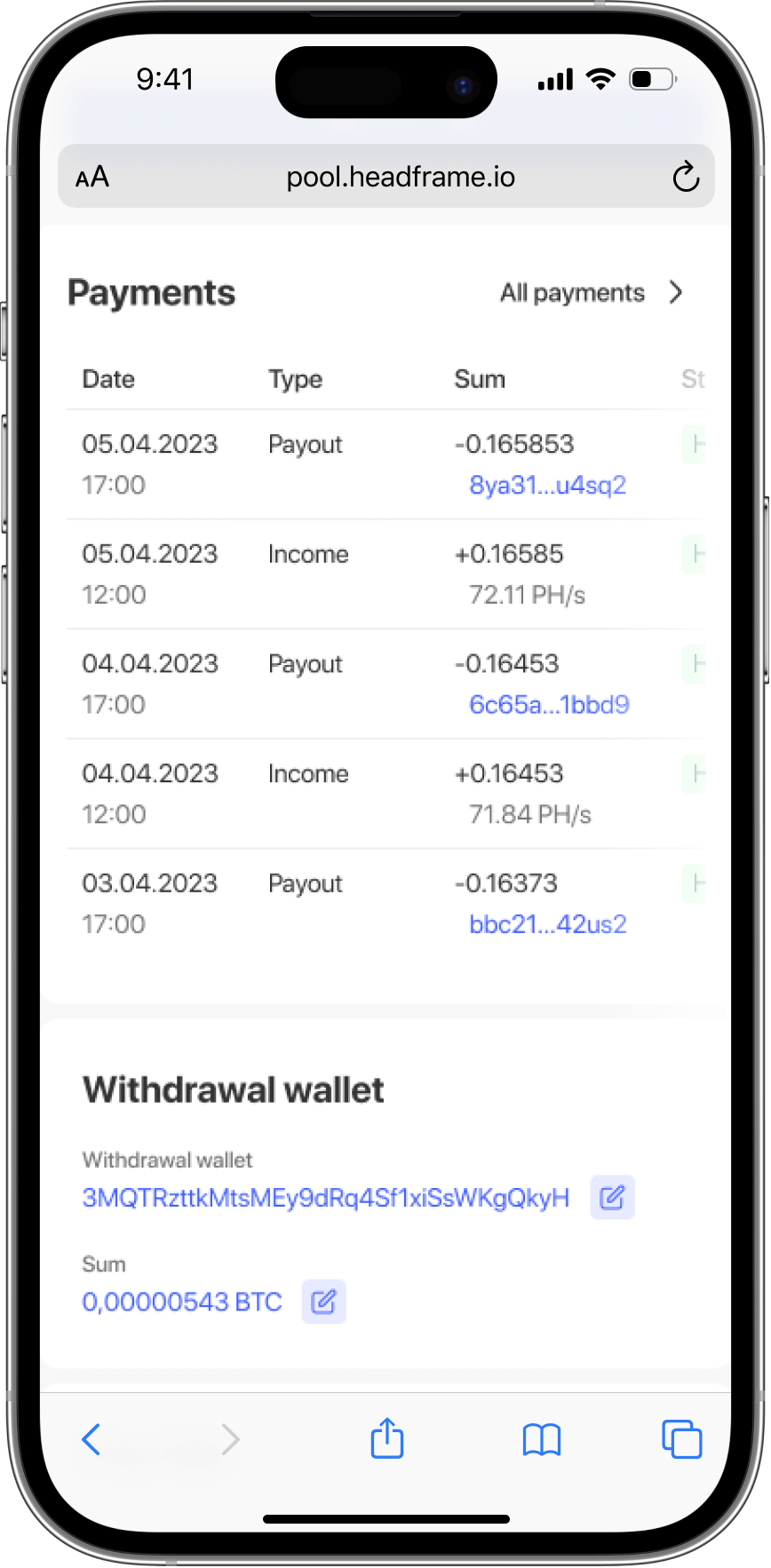Mining Pools and Cybersecurity: Main Threats and Protection
Mining pools play a crucial role in the cryptocurrency industry, pooling resources from numerous miners to enhance the efficiency and stability of digital asset extraction. However, like any technological infrastructure, mining pools are subject to various cyber threats. Cybersecurity is critically important for ensuring the stability and security of mining pools. Let’s examine the main threats faced by mining pools and the measures that can be taken to protect them.
Earn more money with Headframe
Join a mining pool and get the best profitability in mining. Already more than 10,000 miners trust Headframe.
One of the most significant threats to mining pools is DDoS attacks (Distributed Denial of Service). In such attacks, malicious actors direct a massive amount of traffic to the pool’s servers, causing system overload and disrupting operations. As a result, miners lose the ability to connect to the pool and continue mining cryptocurrencies, leading to financial losses. To protect against DDoS attacks, mining pools can use specialized solutions such as cloud-based DDoS protection services that automatically filter malicious traffic and ensure uninterrupted server operation.
Another serious threat is attacks on the software and infrastructure of mining pools. Hackers may attempt to find vulnerabilities in the pool’s software code or its infrastructure to gain unauthorized access to systems and data. To prevent such attacks, mining pools must regularly update their software and conduct security audits to identify and eliminate vulnerabilities. Implementing advanced data encryption methods and multi-factor authentication also helps protect systems and data from unauthorized access.
Cryptocurrency theft is one of the most common threats to mining pools. Malicious actors may attempt to gain access to the pool’s or participants’ wallets to steal mined coins. To protect against such attacks, mining pools should use cold wallets for storing the majority of funds, which are not connected to the internet and are thus less vulnerable to hacks. Storing only a small portion of funds in hot wallets used for daily operations helps minimize losses in the event of an attack. Additionally, using multi-factor authentication and monitoring transactions help detect suspicious activities and prevent thefts.
Phishing attacks pose another serious threat to mining pools. In such attacks, hackers try to fraudulently obtain personal data from pool participants, such as logins, passwords, or wallet access keys. Phishing attacks can be carried out through fake websites, emails, or social media messages. To protect against phishing attacks, mining pools should conduct educational campaigns for participants to inform them about risks and protection methods. Implementing multi-factor authentication and regular security checks also help protect participants’ personal data.
Social engineering is another form of attack where malicious actors attempt to gain access to pool systems or data through manipulation and deception methods. This may include identity forgery, fraudulent calls, or emails. To protect against social engineering attacks, mining pools should train their employees and participants on recognizing and preventing such attacks. Establishing clear security procedures and conducting regular training help reduce risks.
Cyber espionage and industrial espionage also pose threats to mining pools. Hackers may attempt to access confidential information, such as mining technology data, algorithms, or development plans. To protect against cyber espionage, mining pools should use advanced data encryption methods and access controls to restrict access to confidential information to authorized personnel only. Regular security audits and system monitoring help detect and prevent espionage attempts.
Malicious software, such as viruses and trojans, can also threaten mining pools. Hackers may use malware to gain unauthorized access to systems and data, steal cryptocurrencies, or disrupt pool operations. To protect against malware, mining pools should use antivirus programs and regularly update their databases. Conducting regular system scans and applying patches to eliminate vulnerabilities also help prevent malware infections.
Interaction with partners and suppliers can also pose a threat to the security of mining pools. Hackers may attempt to exploit vulnerabilities in partner or supplier systems to attack the mining pool. To protect against such threats, mining pools should carefully select their partners and conduct security audits of their systems. Signing confidentiality and data security agreements and conducting joint training and inspections help reduce risks.
Regulatory requirements and compliance with laws also play an important role in ensuring the security of mining pools. Compliance with data protection laws, such as the General Data Protection Regulation (GDPR) in the European Union, helps ensure the legitimacy and transparency of operations. Regulators may also require security audits and reporting on implemented protection measures. Compliance with regulatory requirements strengthens the trust of participants and investors in mining pools and promotes their long-term success.
In conclusion, mining pools face numerous cyber threats that can disrupt their operations and lead to significant losses. Major threats include DDoS attacks, attacks on software and infrastructure, cryptocurrency theft, phishing, social engineering, cyber espionage, and malware. To protect against these threats, mining pools should use modern data encryption methods, multi-factor authentication, regular security audits, software updates, participant training, incident response procedures, collaboration with partners, and compliance with regulatory requirements. Understanding and implementing these measures help mining pools effectively address threats and ensure long-term stability and security in the cryptocurrency industry.


